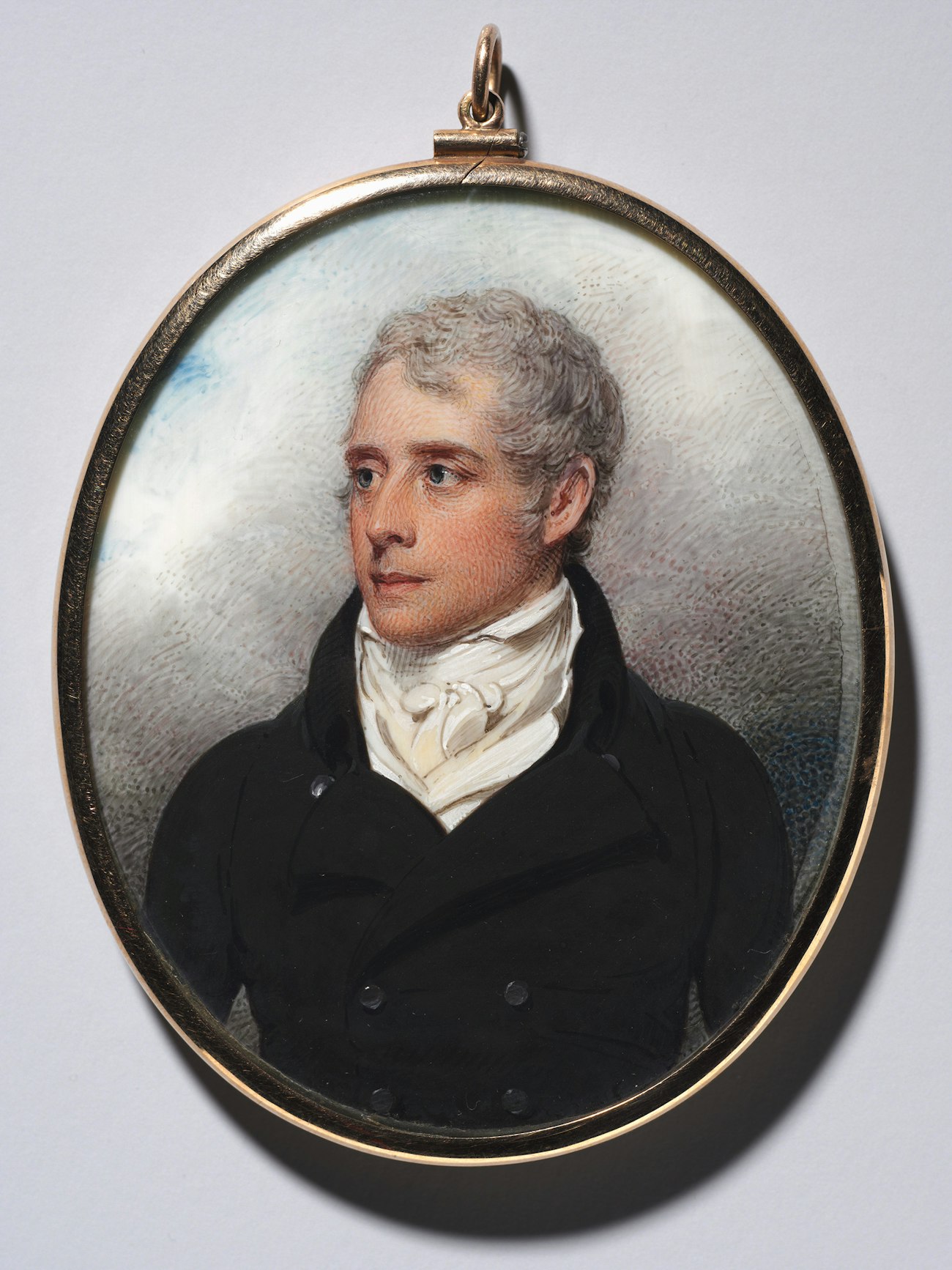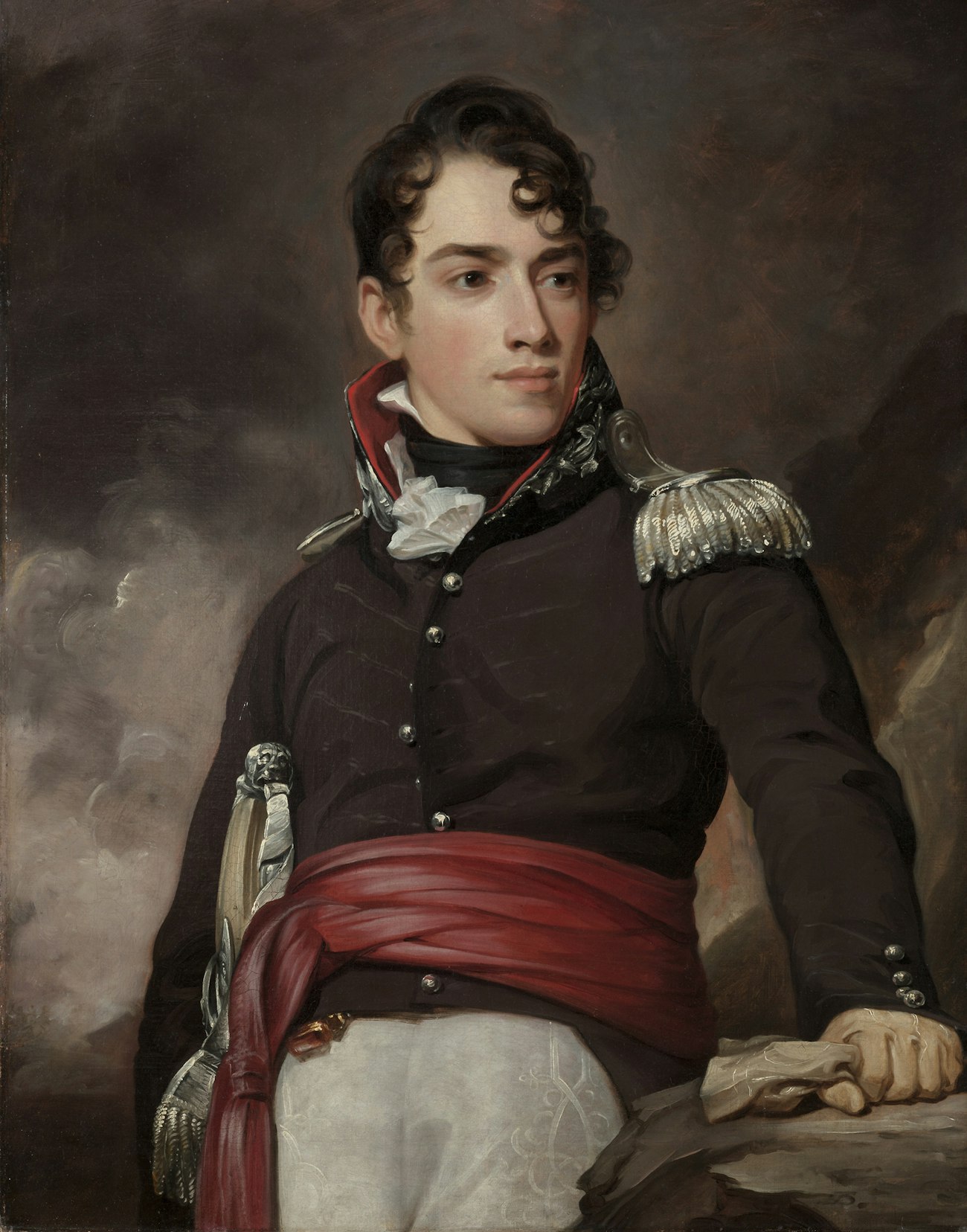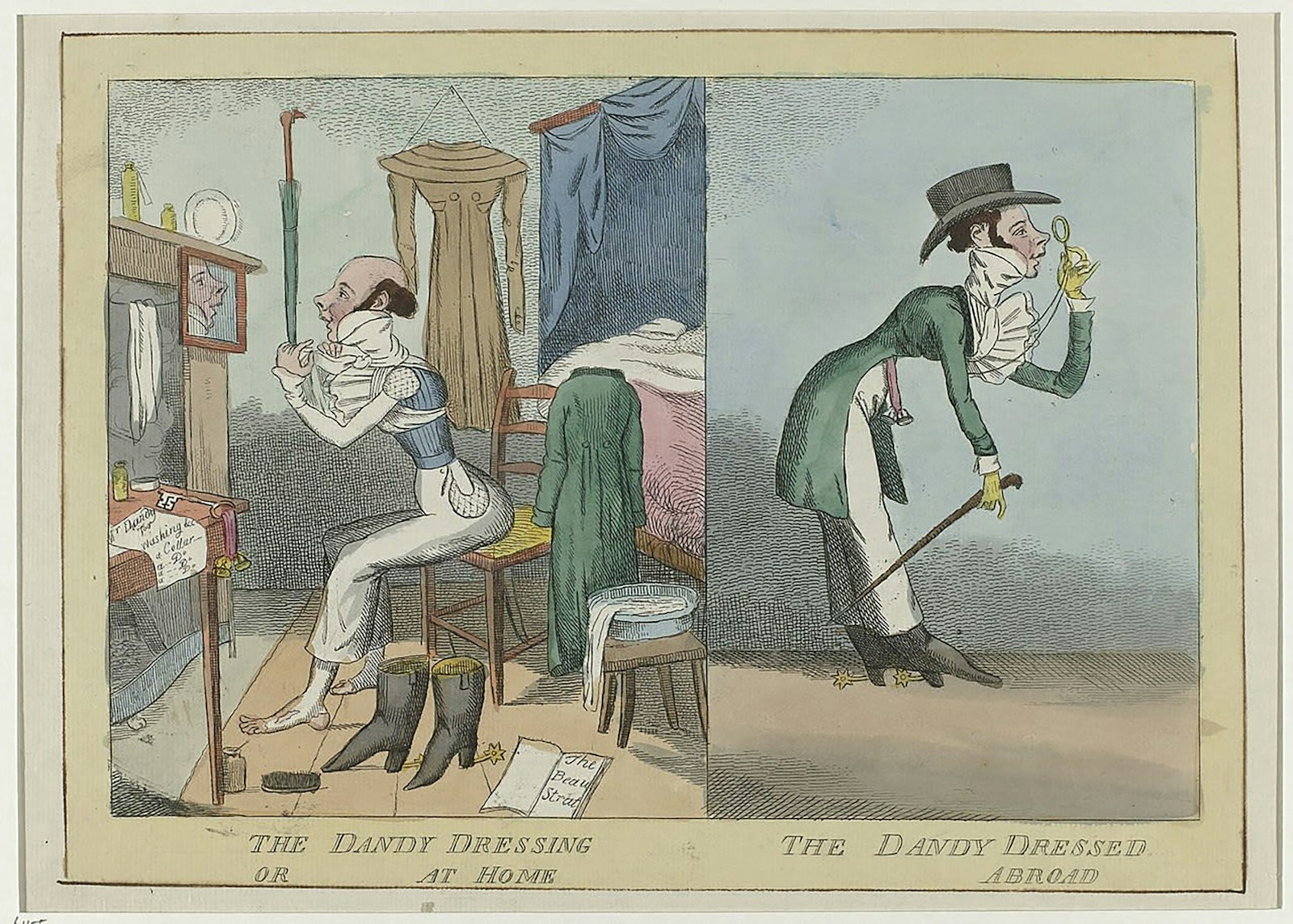As a complete and total sucker for anything related to Jane Austen, I was excited to see previews when the film based on Emma was released. As I watched, I found myself utterly delighted, not just by the prose, but by the ridiculously high shirt points Mr. Elton sported. Naturally, I had to go out and start researching to find out what liberties, if any, Emma took when it came to Mr. Elton’s collar.
Shirt points
Shirt points were collars starched to the absolute limit and then pointed up so they rested on the face. Most of the time, these collars would rest along the jaw line or lower cheek, but some men insisted on taking this bit of fashion to the limit and would wear shirt points that landed right below the ears—just like Mr. Elton in the new Emma. Now, that said, typically the men who would have worn such high shirt points would have been dandies—men devoted to fashion and style—and while I’m not saying there weren’t any vicar dandies, I do think they were probably rare.
Cravats
Of course, while doing this research on shirt points, I could not possibly ignore the segue into learning more about the history of the cravat. Somewhere between a scarf and a modern necktie, a cravat is a long piece of fabric that would be tied around the shirt points and tucked into the shirt itself. They were popular throughout the nineteenth century, thanks to the father of dandies himself, Beau Brummell. For many years, Brummell was considered the arbiter of men’s fashion, and he was a devotee of the starched white cravat. In fact, so devoted was he to achieving the perfect look, he would have well over a dozen washed, perfectly starched cravats presented to him in the morning so he could tie on one after the other until he finally got it right, as tying the highly starched cravat incorrectly would lead to wrinkles, and that just wouldn’t do.
 Portrait of Sandford Peacocke, 1801. In this portrait the subject wears shirt points that have been folded down at the tips (as was the fashion at the start of the nineteenth century) and a carefully tied cravat. Photo Credit: The Cleveland Museum of Art, The Edward B. Greene Collection.
Portrait of Sandford Peacocke, 1801. In this portrait the subject wears shirt points that have been folded down at the tips (as was the fashion at the start of the nineteenth century) and a carefully tied cravat. Photo Credit: The Cleveland Museum of Art, The Edward B. Greene Collection.
Cravats were either square or rectangular and woven using linen, cotton, or silk. Though you could get them in a variety of colors, white was the most popular. Why white? It has to do with wealth and social class. Cravats were easily soiled by neck sweat and regular wear and tear, and with a white cravat, any bit of sweat or dirt would be extra visible. As such, white cravats had to be changed throughout the day whereas a black or navy cravat could probably be worn from morning until night. If you wore a white cravat, it meant you could afford multiple expendable cravats and had somebody who could wash out the stains for you. White cravats signified wealth.
 Portrait of Jean Terford David, 1813. Black stocks, such as the one seen in this portrait, were the neckwear of choice for military officers. Photo credit: The Cleveland Museum of Art, Gift of the John Huntington Art and Polytechnic Trust.
Portrait of Jean Terford David, 1813. Black stocks, such as the one seen in this portrait, were the neckwear of choice for military officers. Photo credit: The Cleveland Museum of Art, Gift of the John Huntington Art and Polytechnic Trust.
Stocks
For those who wanted something even more formal, an alternative to the cravat was the stock. These were much smaller pieces of cloth tied or hooked at the back of the neck, often with a buckle. Some stocks were simple rectangular bits of pleated fabric that fit tightly on the neck while others were a bit more like pre-tied cravats complete with front knots and ruffles. Stocks were considered much more formal than the cravat, and black stocks were the neckwear of choice for English military officers. They were also much more difficult to wear than their scarf-like brethren as a stock limited the mobility of the head and neck. A man wearing a stock could not slouch.
Now of course, there’s much more to men’s Regency neckware than what I have here, and many of these fashions were popular throughout the the nineteenth century. Hopefully, though, this article will give you the basics to be able to watch the film Emma or any Regency Era period piece and know a bit more about the male characters and where they stood in society—or in the eyes of the film’s director—based on their neckwear.
RESOURCES
Christina Garton is the editor of Little Looms magazine.
Originally published February 28, 2020; updated May 18, 2022.

